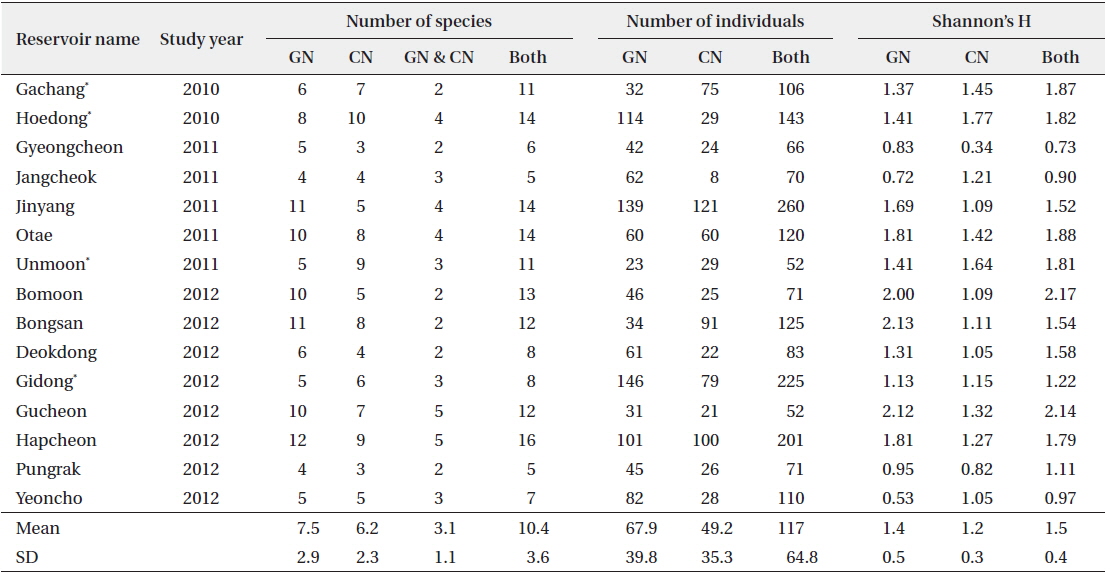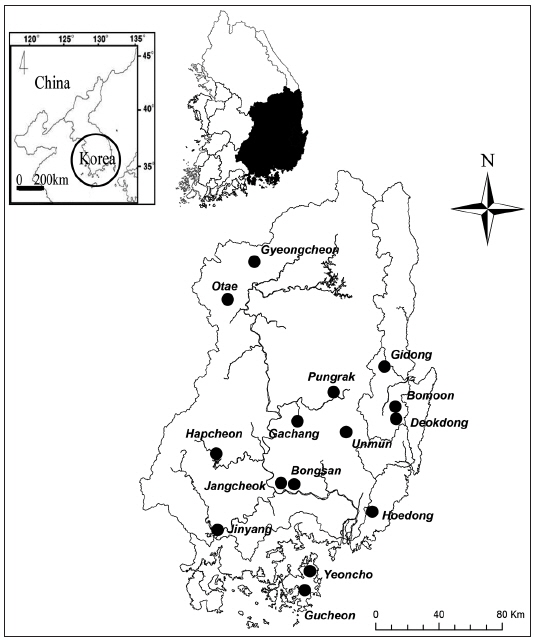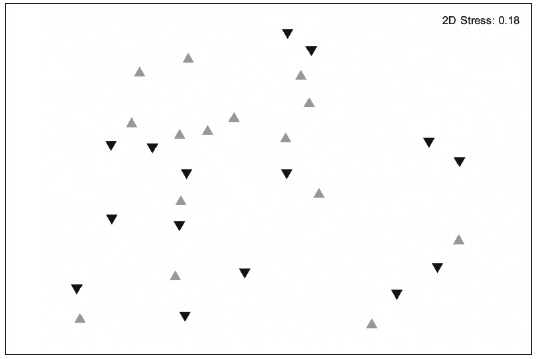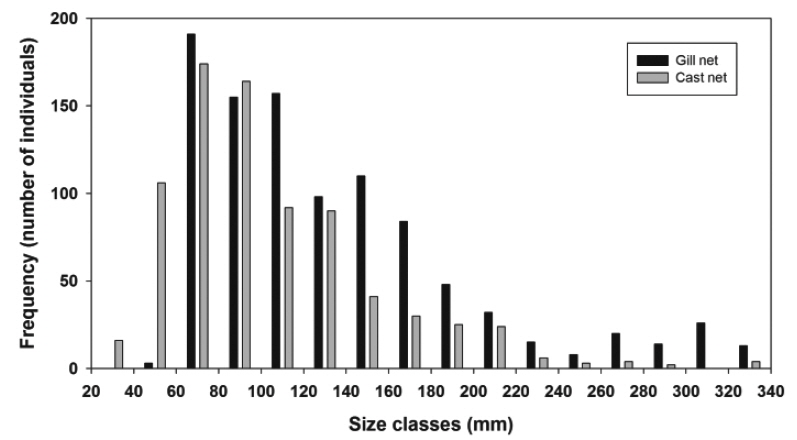



Determination of fish assemblages in certain regions is fundamental and important work in fish ecology. For appropriate estimation of fish fauna, selection of fishing gear is important and directly influences species diversity and yield of the catch. Selection of inappropriate fishing gear introduces problems like under- or over-estimation of species diversity, and results do not reflect the real status (Rotherham et al. 2007, 2011).
Reservoirs typically consist of two different environments—the littoral and the pelagic zones—with different physical and chemical characteristics. Because these characteristics can affect the composition of the fish assemblage (Matthews 1998), sampling of both zones with appropriate fishing gear is important. The gill net and electrofishing are generally used for fish sampling in reservoirs. Although gill nets have various mesh sizes, corresponding to size and body type of different fish, they are insufficient for catching small fish.
Therefore, other fishing gear is required, such as electrofishing or the cast net. However, electrofishing is prohibited by law in Korea, although this method is particularly applicable for sampling the littoral zone (Brosse et al. 2007, Miranda and Boxrucker 2009, Menezes et al. 2013, Říha et al. 2015). The cast net is commonly used in Korea instead of electrofishing. It has been used to catch fish staying at or inhabiting shallow areas, such as wetland and the littoral zone, and to supplement impoundment collections (Meador and Kelso 1990, Stevens 2006, Stevens et al. 2006, Sheaves and Johnston 2008). It can cover a large area per deployment, compared with a throw trap, and is efficient where the gill net and the seine net are ineffective to use (Stein III et al. 2014).
The objective of this study was to estimate cast net effectiveness for sampling reservoirs distributed over the south-eastern part of the Korean peninsula. Fish assemblages and diversity indices were mainly used for estimation. Based on these results, we discuss the utilization of the cast net for monitoring the littoral zone of reservoirs.
The study was conducted at 15 reservoirs, distributed in the south-eastern part of the Korean peninsula, used for diverse purposes such as agriculture, electricity, and drinking water (Fig. 1). Two different fishing gears were used: a cast net (mesh size = 7 mm, net area = 16.6 m2) for the littoral zone and two types of gill net (mesh size = 30 mm and 70 mm, length = 50 m) for the pelagic zone. These types of gill nets are commonly used for scientific purposes in Korea. The fish were caught in June and October from 2010 to 2012. To avoid rainfall impact, we selected sampling periods before and after the monsoon season. Two reservoirs were investigated in 2010, five in 2011, and eight in 2012. Ten cast net samplings were conducted in the littoral zone, following the shoreline, and gill nets were set up overnight for about 12 hours, including two twilight periods.
The Shannon diversity index (Pielou 1975) was calculated to compare catches with two different fishing gears, following the equation H = -Σ
Total length (TL, cm) and body weight (BW, g) were measured to analyze potential differences in the lengthweight relationship (LWR) of six species between fishing gears. Occurrence and the possibility for statistical comparison of fishing gears were considered for species selection in this analysis. If one species was caught predominantly with the gill nets and rarely with the cast net, that species was excluded. Thus, the six species were
Differences in catch composition between fishing gears were analyzed using nonmetric multidimensional scaling (NMDS) and analysis of similarities (ANOSIM), performed with the software primer 6 (Primer-E Ltd., Plymouth, UK). NMDS constructs two-dimensional ordination in a manner that best represents relationships among samples in a similarity matrix (Field et al. 1982). Similarity matrices were generated for catch compositions by square-root-transforming the raw abundance data and calculating the Bray–Curtis similarity index for each pairwise comparison.
To compare statistical differences in abundance data, such as number of species or number of individuals, and calculated values, such as the Shannon diversity index or parameters
The number of species and individuals, and Shannon diversity indexes are presented in Table 1. Although means for gill nets were always higher than for the cast net, there were no statistical differences (Wilcoxon signed rank test,

Number of fish species and individuals, and Shannon diversity index of two different fishing gears
Length distribution patterns of fish collected with each gear were similar (Fig. 3). Fish of the size class 6–12 cm dominated catch with all sampling gear, and importance of other size classes gradually decreased with size increment. In case of gill nets, the number of collected individuals increased once more in the size class > 26 cm. These fish were collected with a gill net with a mesh size of 7 cm. Conversely, very few fish were collected of length less than 6 cm. Most small fish were caught with the cast net, owing to its small mesh size (7 mm).
LWRs are shown in Table 2. Parameter

Descriptive estimation of length-weight relationship parameters for six dominant species collected by two different fishing gears in reservoirs (the value of correlation coefficient for all species were exceeded 0.975)
The littoral zone is important for many fish species (Pierce et al. 2001). Many small and juvenile fish use the littoral zone of reservoirs as feeding ground and to avoid predators (Lewin et al. 2004). In this study, the cast net was used for investigating fish status in the littoral zone of reservoirs instead of electrofishing. This increased the number of species identified in each reservoir, and in some cases, more species were caught with the cast net than with gill nets (Table 1). This means that the cast net improved fish data in the littoral zone of studied reservoirs. However, cast net sampling could not represent fish assemblages in entire reservoirs. Therefore, combining catches with both gears is strongly recommended to determine fish assemblage in reservoirs.
If only one gear is used for sampling, there is a possibility of substantial underestimation of fish status. In case of the Jinyang reservoir, only 5 species were collected with the cast net, a huge difference compared to the number of species collected with both gears. The same was found in other reservoirs as well. Big fish were predominantly caught in the pelagic zone with gill nets. Many small fish species and juveniles live in the littoral zone (Brosse et al. 2007), so that cast net sampling could be important and effective for collecting fishes.
LWR is used for comparing weight to length of fish (Froese 2006). It is useful for fisheries management (Crec’hriou et al. 2012), and can provide information on the population status of a species in a habitat (Petrakis and Stergiou 1995), environmental condition, and food availability. The values for parameter
Gill nets are passive fishing gear and a well-known fishing gear for reservoirs. The cast net is an active fishing gear, enabling sampling of littoral zones similar to electrofishing. There are some problems and limitations when using the cast net in the littoral zone of reservoirs. First, aquatic plants such as free-floating and floating leaves are abundant during high temperature periods (Oke 1987, Woodward 1987, Riis et al. 2012), and cast net sampling could be affected. However, Stein III et al. (2014) insisted that a cast net is useful in the submersed aquatic vegetated area. Second, if the depth of the littoral zone is more than 2 m, the descent of a cast net to the bottom takes a relatively long time, thus many fish could escape from it. Finally, catch rate is highly affected by the investigator’s skill. However, these problems are easily addressed. In this study, the cast net was appropriate for collecting fish in the littoral zone. Thus, the cast net could replace electrofishing for sampling the littoral zone of reservoirs. Additionally, a combination of the cast net and gill nets is recommended for more reliable fish status estimates in reservoirs.





